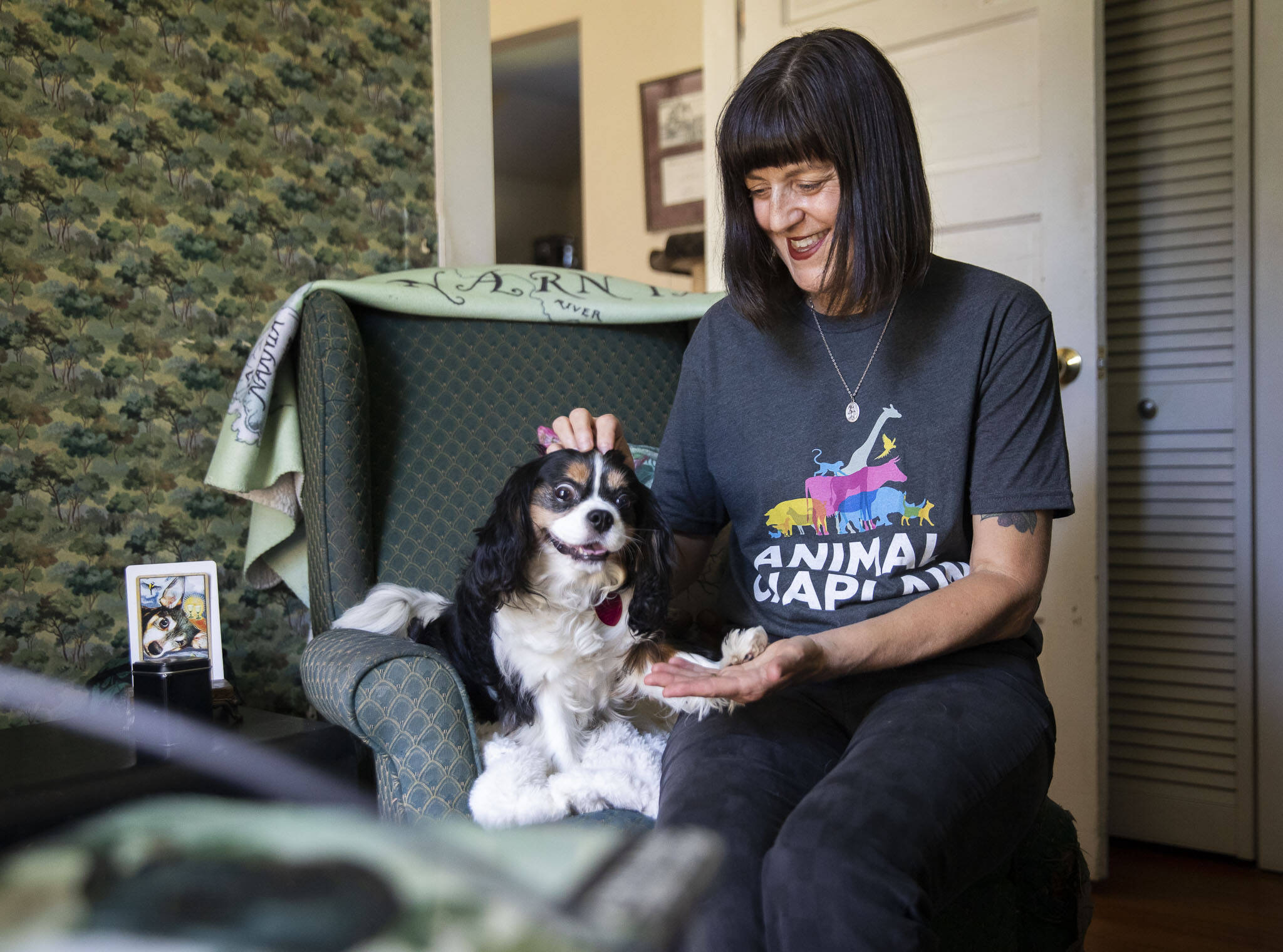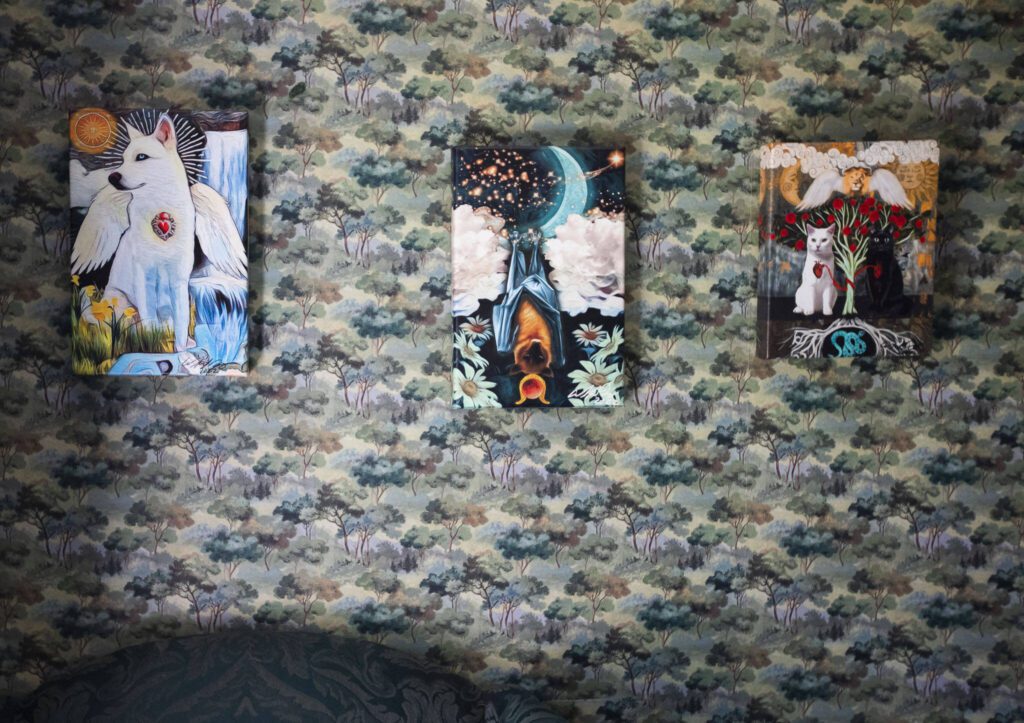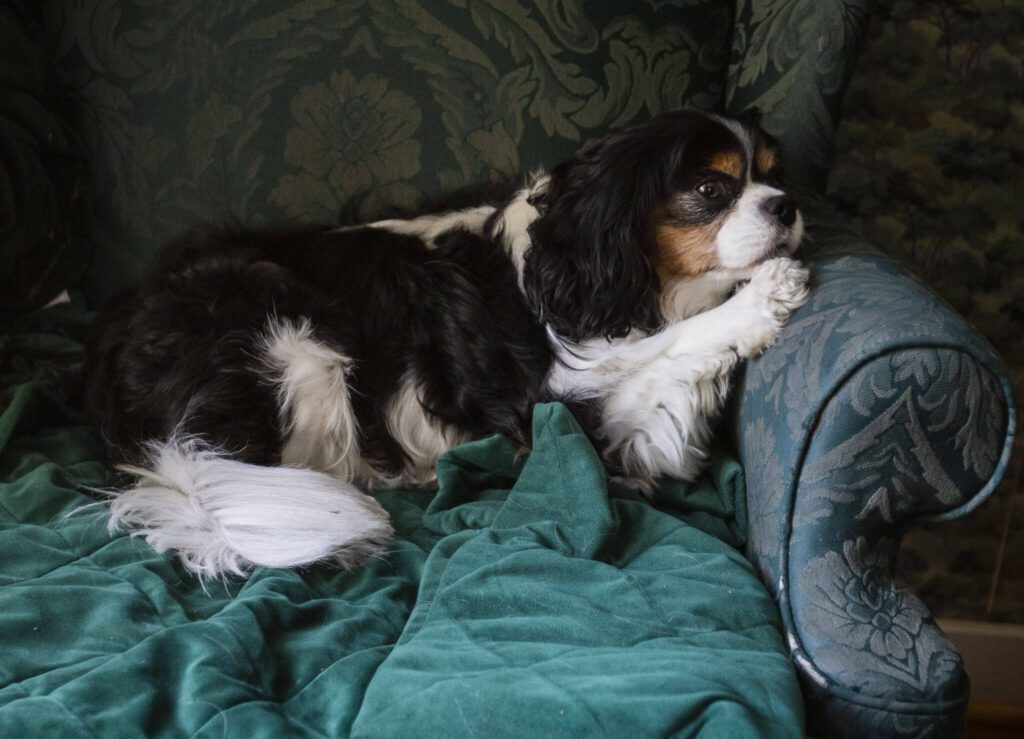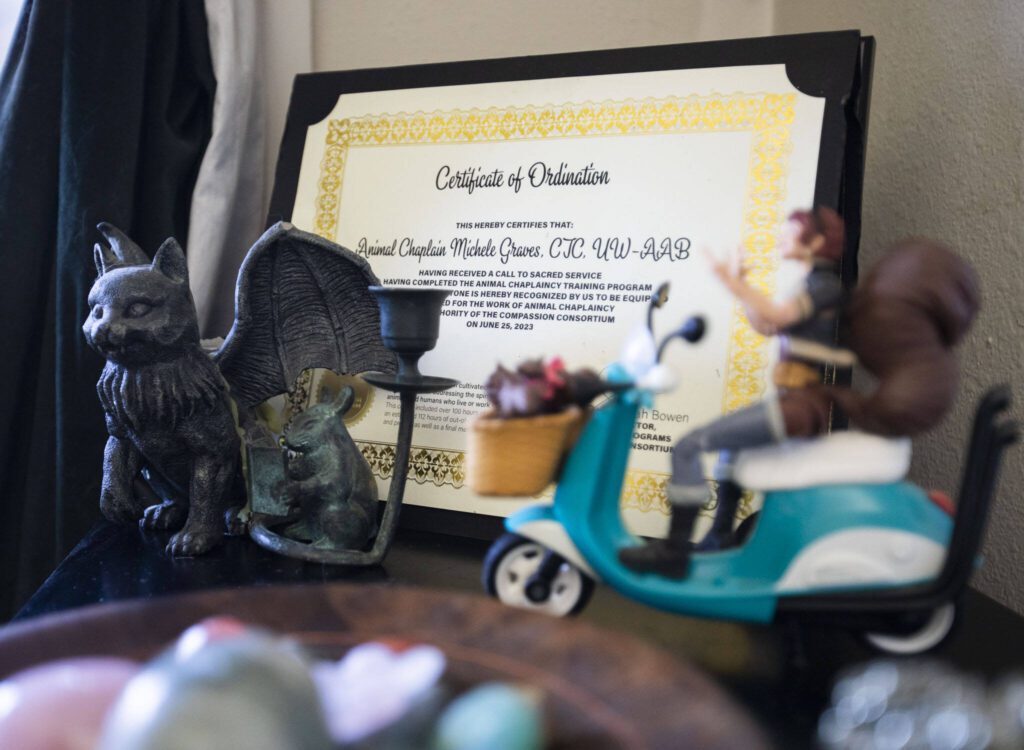EVERETT — The death of a pet is hard for people.
It can be just as hard when pets lose their people.
What’s up with that?
Shel Graves is an animal chaplain for all beings.
“Absolutely, animals do feel grief and loss,” she said. “They communicate their grief through their behavior. They use their bodies instead of words.”
Not just dogs and cats.
“It can be any animal that shares your home. Rats, rabbits, guinea pigs, birds,” she said.
Graves makes house calls.
The spiritual element of chaplaincy is a part of her new Everett business, Shel Graves Animal Consulting. Her rates are the same as for animal training and behavior services, which start at $100 for a consult. Find her and others at findanimalchaplain.com.
Chaplaincy services, in general, include blessings, roadside memorials, prayers for sick or injured animals and support during surgery or end of life.
Lars Pardo was ordained in June, but doesn’t plan to hang out a shingle. He lives in a log house in the woods of Greenbank on Whidbey Island.
“I did a roadside memorial this morning with a rabbit that was dead in the middle of the road,” he said. “I picked up some wildflowers by the side of the road and did a quick prayer.”
Graves and Pardo were ordained through Compassion Consortium, an online interfaith-interspiritual-interspecies organization. The next training starts in September. The 9-month chaplain program is $2,200.
An Associated Press story on animal chaplaincy in March reported that what started as a few individuals offering ad hoc support for people grieving pets “has become an informal network of professionals, both paid and unpaid, providing spiritual support everywhere from veterinary clinics to animal shelters. Animal chaplain training programs are reporting increased enrollment year over year.”
The Washington State University College of Veterinary Medicine’s veterinary chaplain is one of the few nationwide affiliated with a university, according to a February 2024 story in the WSU Insider. The chaplain, a compensated volunteer, offers a listening ear, attends euthanasia procedures and makes the rounds at the Pullman teaching hospital, the story said.
Pardo, 73, said animal chaplaincy complements his years as a shelter volunteer, dressing as Santa Paws and taking flowers to pet memorials. He helped fund a sensory garden for dogs at Everett Animal Shelter.
“The more you get involved the more you want to expand this relationship,” he said. “You have this spiritual connection with animals.”
The chaplain training was comprehensive, he said.
“There is a ton of reading of various religions and exploring what religions have to say about the Creation,” he said. “The divine is in everything. It’s not complicated. It’s humans that make everything complicated.”
Sure, it can be hard to explain.
“Bear in mind that animal people are basically eccentric,” Pardo said. “But we have a benign eccentricity.”
After leaving as communication director at The Everett Clinic in 2017, Graves, 51, volunteered shoveling muck for rescue farm animals at Pasado’s Safe Haven. That led to animal caregiving and behavior training.
She found her earlier experience as a hospital hospice volunteer transcended to animals.
“When I worked in human hospice, when someone is dying one of the hardest parts for them is lack of choice and control,” she said. “For an animal it’s the same thing. Animals know when they are dying, too.”
She is not an animal whisperer.
“Instead of trying to communicate with them I give them ways to communicate with me,” she said. “Mostly by reading body language and paying attention to their likes and dislikes.”
Graves shares her Everett home with two rescue dogs, Lily and Tish, and a cat, Mary Shelley, a stray from a shelter.
The dogs were malnourished and matted when found on a rescue mission four years ago.
“Lily is a big part of my healing from all the rescue work I’ve done,” she said. “Being able to give her a good home.”
Lily, of possible Cavalier King Charles Spaniel descent, curled up in a chair, deep in a nap.
Tish was off getting her teeth cleaned at the vet on this day. Mary Shelley was hiding. Her purple lined coffin-shaped cat bed in the parlor was empty.
Is there a person, place or thing making you wonder “What’s Up With That?” Contact reporter Andrea Brown: 425-339-3443; abrown@heraldnet.com; Twitter: @reporterbrown.
Tips for grieving animals
— Source: Shel Graves
Continue their routines of walking, feeding and play time as much as possible.
Offer comfort and companionship. Animals know something has changed. It is OK to express grief around them.
Offer a bit more of things that they love each day, such as a wand toy play with a cat, fetch or trick training for a dog.
Look for ways to engage each of their senses. Comfort can be their favorite sights, smells, sounds, tastes and touches.
Let them make choices whenever possible, including whether to interact or not.
Tips for grieving humans
One of the hardest parts of losing an animal friend is losing all of those daily activities and routines with them. Look for ways to bring those things that give you comfort (readings, music, reflection, time outside) into those moments.
Continue to take their usual walk and use that time as reflection.
Spend five minutes sitting in the animal’s favorite place while reading a favorite passage or listening to music.
Join a pet loss support group or volunteer at a local animal shelter, rescue or sanctuary. Compassion Consortium has a Sunday Service and a Monthly Animal Companion Loss Support Group: www.compassionconsortium.com.
Other resources
Washington Pet Loss Resources: pet-loss.net/resources/WA.shtml
International Association for Animal Hospice and Palliative Care: iaahpc.org/pet-parent
“Sacred Sendoffs: An Animal Chaplain’s Advice for Surviving Animal Loss, Making Life Meaningful, & Healing the Planet,” by Sarah A. Bowen: www.sacredsendoffs.com
“How Animals Grieve,” by Barbara J. King
Talk to us
> Give us your news tips.
> Send us a letter to the editor.
> More Herald contact information.




























